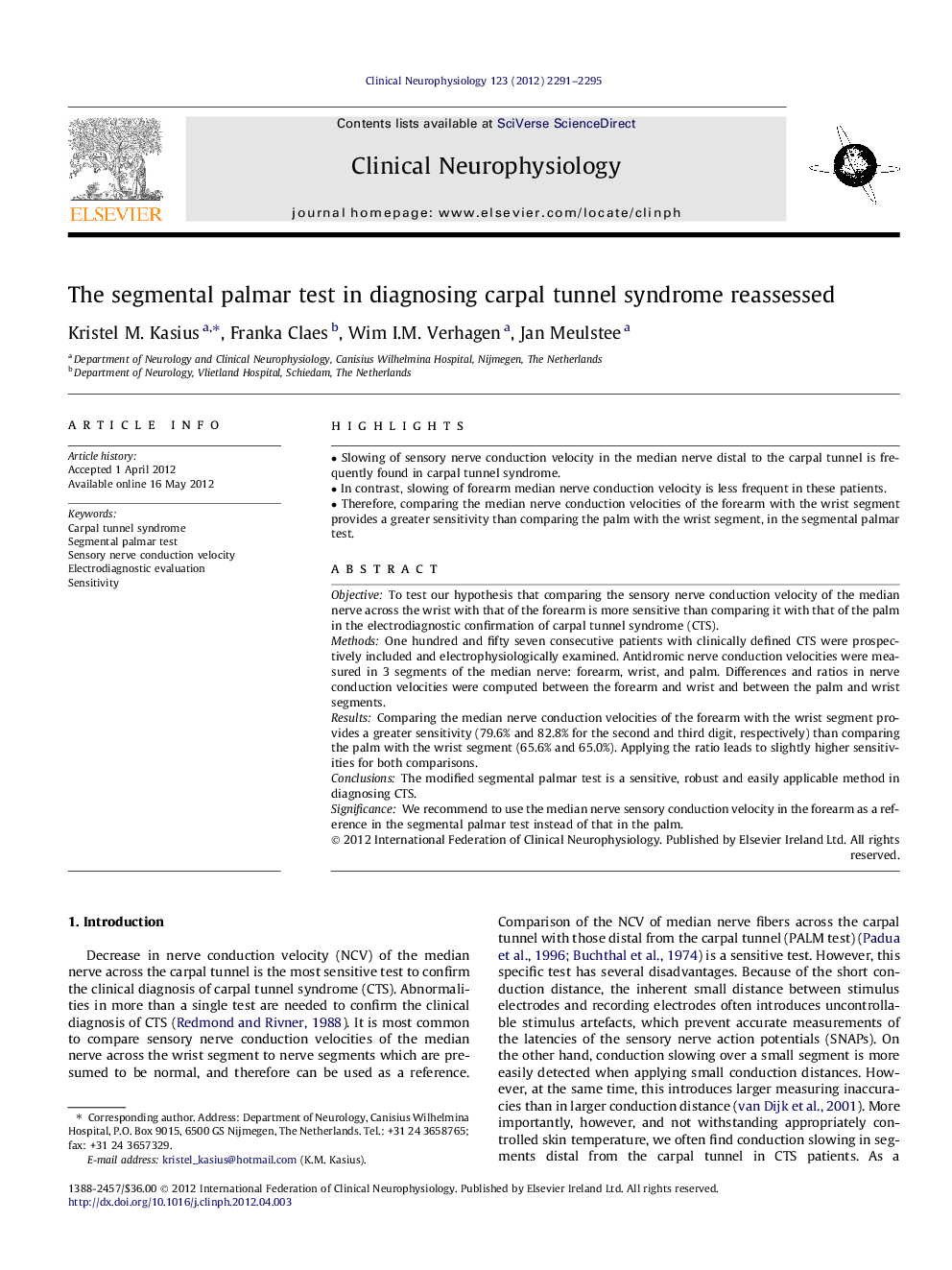| Article ID | Journal | Published Year | Pages | File Type |
|---|---|---|---|---|
| 3043121 | Clinical Neurophysiology | 2012 | 5 Pages |
ObjectiveTo test our hypothesis that comparing the sensory nerve conduction velocity of the median nerve across the wrist with that of the forearm is more sensitive than comparing it with that of the palm in the electrodiagnostic confirmation of carpal tunnel syndrome (CTS).MethodsOne hundred and fifty seven consecutive patients with clinically defined CTS were prospectively included and electrophysiologically examined. Antidromic nerve conduction velocities were measured in 3 segments of the median nerve: forearm, wrist, and palm. Differences and ratios in nerve conduction velocities were computed between the forearm and wrist and between the palm and wrist segments.ResultsComparing the median nerve conduction velocities of the forearm with the wrist segment provides a greater sensitivity (79.6% and 82.8% for the second and third digit, respectively) than comparing the palm with the wrist segment (65.6% and 65.0%). Applying the ratio leads to slightly higher sensitivities for both comparisons.ConclusionsThe modified segmental palmar test is a sensitive, robust and easily applicable method in diagnosing CTS.SignificanceWe recommend to use the median nerve sensory conduction velocity in the forearm as a reference in the segmental palmar test instead of that in the palm.
► Slowing of sensory nerve conduction velocity in the median nerve distal to the carpal tunnel is frequently found in carpal tunnel syndrome. ► In contrast, slowing of forearm median nerve conduction velocity is less frequent in these patients. ► Therefore, comparing the median nerve conduction velocities of the forearm with the wrist segment provides a greater sensitivity than comparing the palm with the wrist segment, in the segmental palmar test.
